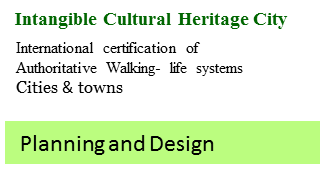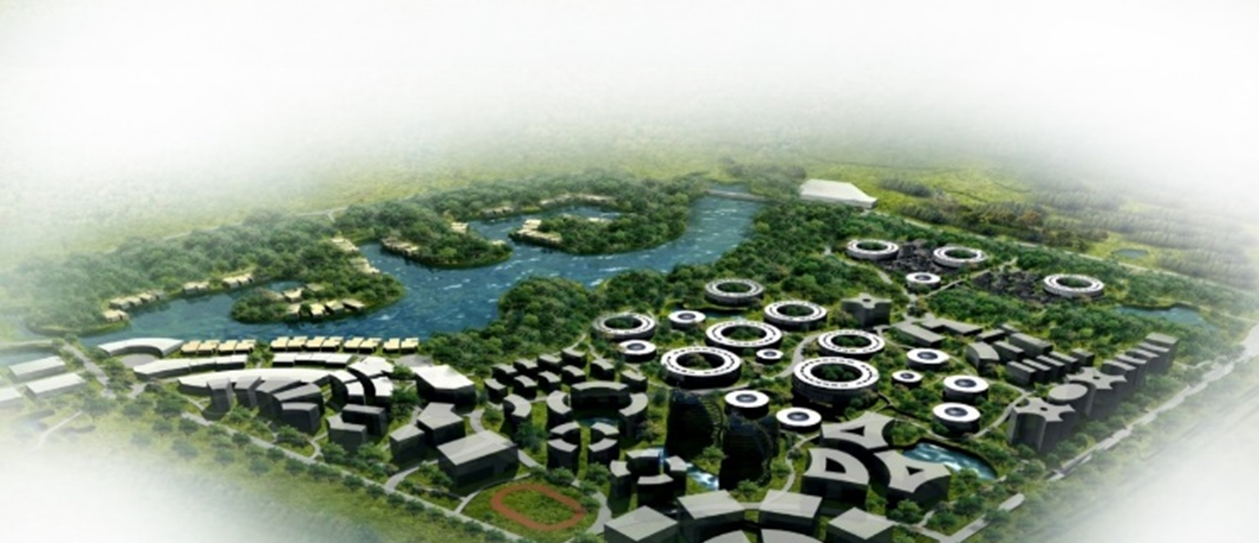Intangible Cultural Heritage City
The purpose of this undertaking of the International Alliance Of Intangible Cultural Heritage Cities&Towns, is to promote the urban living space system dominated by intangible cultural heritage, to promote the inheritance and development of intangible cultural heritage, to advocate the protection of urban traditional culture and urban space form, to encourage intangible cultural heritage, to provide more protection and developing opportunities for intangible cultural heritage, and to benefit small towns, cultural parks, streets, villages and other areas. The contents include local intangible culture, living environment, social communication ,as well as tangible and intangible cities with local traditional history and living custom.
Just like Venice in Italy. Venice government has worked its way through the struggle between modern development and traditional protection. Among many modification plans, the establishment of organic walking circle is one of the most successful solutions to the contradiction between modern life tools and traditional space. In many walking areas of Venice, tourists and residents can experience the traditional way of living that has been there for thousands of years. Perhaps, the dense waterways can cause traffic pressure of the city. But for residents who live here, the firm belief in the protection of traditional way of living is more important so that they can enjoy the great history and culture.
We proposed the idea of "intangible cultural heritage city with walking lifestyle" to achieve balance and improvement, to improve the overall living quality of urban residents by building a comprehensive town based on intangible cultural heritage and encouraging urban space based on residents' living environment and public transportation accordingly. From the perspective of residents, under the background of the severe destruction of the current environment and local urban culture, the "intangible cultural environment" has become an urgent need to ensure the continuation and development of intangible cultural heritage and inheritance, and “achieve the improvement of living quality "; From the perspective of industry development, "intangible cultural heritage city with walking lifestyle" is a deeper development of urban construction. Its concept originates from the improvement of local culture and living environment. At the same time, the intangible cultural heritage city with walking lifestyle, as a living body, has the ability of self-regulation and active adaptation to the natural,economic and social environment.
Measures


The planning and design of the organic intangible cultural heritage city focuses on the towns with intangible cultural heritage dividend tradition and representative action. At the same time, it puts forward the overall requirements including improving the slow-line system, building distinctive themes and prominent personalities, creating powerful brand and obvious benefits, spreading traditional culture of intangible cultural heritage, creating a beautiful living environment, and forming a healthy and refined leisure lifestyle.
In accordance with the requirements of "urban essence of organic intangible cultural heritage city", the planning and designing of the city should include Organic d urban elements, culture, food, reception and accommodation, entertainment and leisure, commerce, fitness, environment and sanitation planning, and historical and cultural elements of local culture and custom. Collect and sort out custom and rituals such as marriage, sacrifice, festival, diet, scenery, opera and crafts, Fully reflect the cultural and folk elements in space planning. Continue the folk-custom activities. Show the simple folk custom of organic intangible cultural heritage cities and towns , in order to continuously improve the cultural quality of residents and enrich their spiritual and cultural life.
According to the meaning of "creating a leisure lifestyle in the organic intangible cultural heritage cities", in the process of planning and designing, one should make full use of the resource advantages including local culture, characteristic industries and ecological environment. Drive the development of the tertiary industry and broaden ways for employment and start-ups for local residents, by using the urban leisure industry as the carrier, rationalizing allocation of resources, perfecting service facilities and enhancing the attraction of organic intangible cultural heritage cities and towns to urban and rural areas.
According to the connotation of "creating exquisite and beautiful living environment in organic intangible cultural heritage cities and towns", the plan fully considers the needs of local residents to improve the quality of life and adopts scientific planning and layout. Improve public service facilities and municipal infrastructure, and comprehensively renovate important open spaces and surrounding towns and environments.
